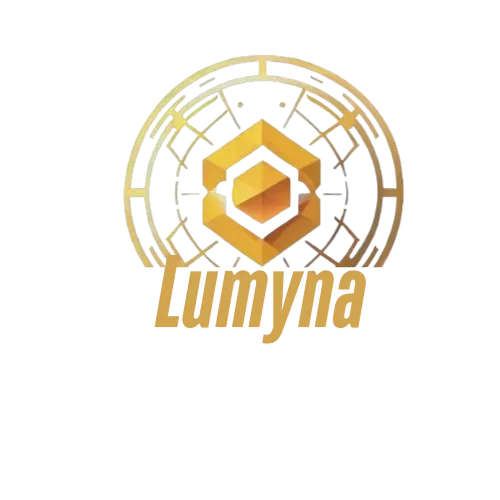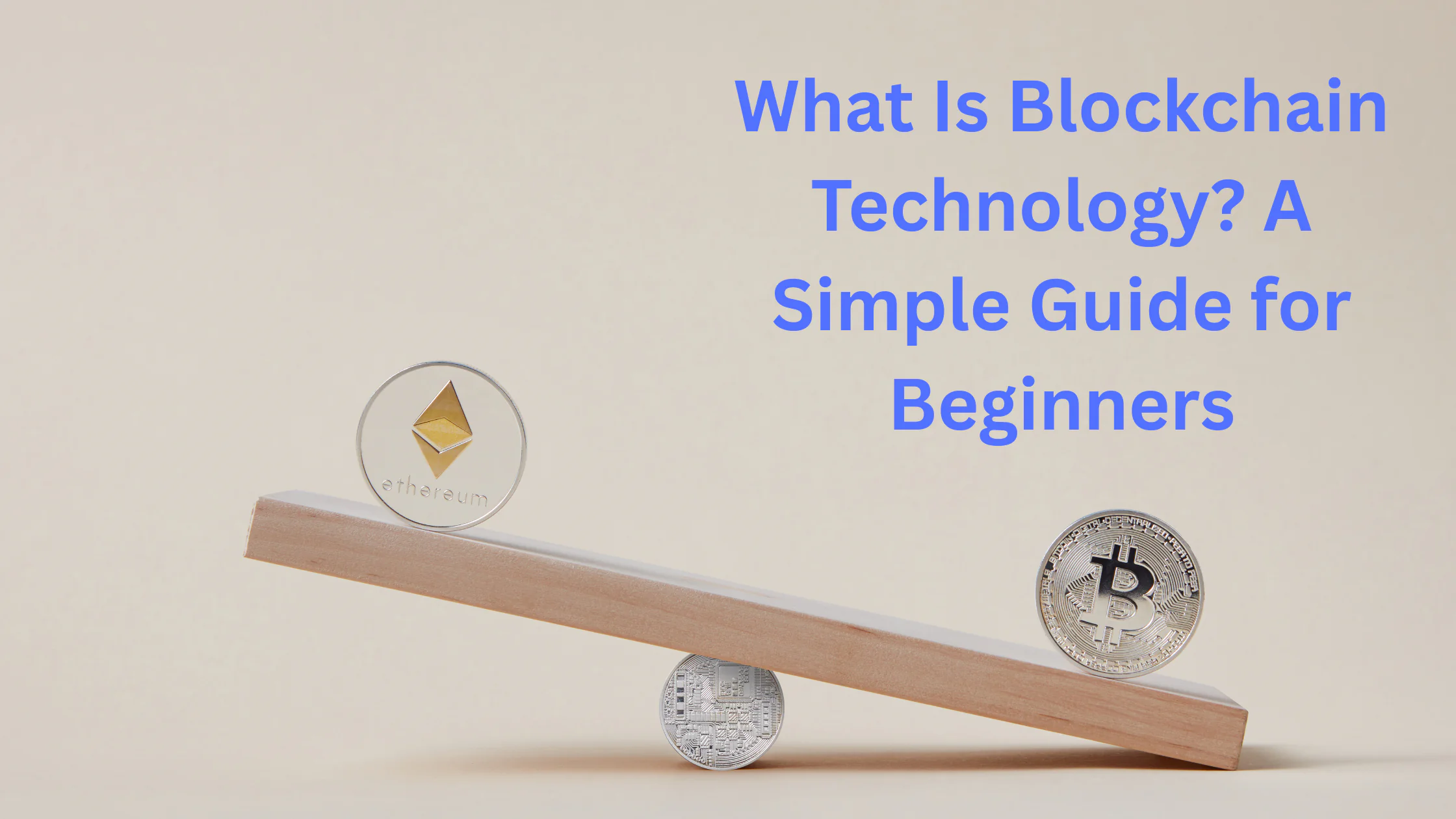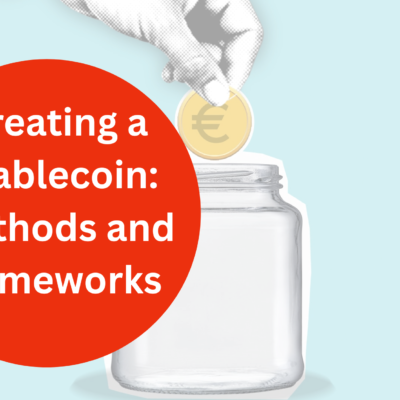Welcome to the world of cryptocurrencies, where Bitcoin often gets the most attention, but many other digital currencies, called altcoins, are just as important.
Altcoins, or “alternative coins,” are all cryptocurrencies except Bitcoin. They come in different types, each with its own purpose.
For example, Ethereum helps create apps, while stablecoins keep their value steady, offering calm in a changing market.
If you’ve heard of Bitcoin but feel confused by the thousands of other coins, you’re not alone! This guide will explain what altcoins are and how they differ from Bitcoin, helping you understand cryptocurrencies clearly.
Bitcoin was the first cryptocurrency, creating a new way to send money without banks. Think of it as the leader that started it all.
Altcoins are like Bitcoin’s family, each with special features—whether it’s running apps, making fast payments, or keeping value steady.
Learning about altcoins opens up new possibilities in the crypto world. Later, we’ll look at how platforms like Coinbase can help you explore these coins, but for now, let’s focus on the altcoin definition and how they compare to Bitcoin.
Altcoins Definition: A Simple Guide
Altcoins, short for “alternative coins,” are all cryptocurrencies other than Bitcoin. They emerged after Bitcoin’s launch in 2009, offering new ideas and features to the world of digital money.
Think of Bitcoin as a basic phone—it made calls and sent texts, but altcoins are like smartphones, packed with apps and tools for different needs. Since Bitcoin showed the world how decentralized money could work, developers began creating altcoins to improve or expand on its ideas.
For example, Litecoin, introduced in 2011, aimed to make transactions faster and cheaper. Today, thousands of altcoins exist, each with its own purpose and design, making the crypto world rich and diverse.
Altcoins are not just copies of Bitcoin. While some, like Litecoin, share similarities with Bitcoin by focusing on payments, others bring fresh innovations.
For instance, Ethereum introduced smart contracts, which are like automatic agreements that power apps, from games to finance tools.
Other altcoins, like Monero, prioritize privacy, hiding transaction details for extra security. Stablecoins, another type, aim to keep their value steady, unlike Bitcoin’s price swings.
This variety means altcoins can serve many roles—whether it’s speeding up payments, building new technology, or offering stable value for everyday use.
Understanding altcoins explained in this way shows their unique place in the crypto world.
What makes altcoins stand out? Here are three key traits:
- Varied purposes: Altcoins do more than just act as money. Some power apps, others focus on stability or privacy.
- Different technology: Many altcoins use faster or more efficient systems than Bitcoin, or they add features like smart contracts.
- Independent networks: Most altcoins run on their own blockchains, like Ethereum, or exist as tokens on other networks.
Altcoins are exciting because they solve new problems and offer choices Bitcoin alone can’t provide.
Whether you’re interested in payments, apps, or privacy, there’s likely an altcoin designed for it. As you explore, you’ll see how these coins shape the future of cryptocurrency.
Altcoins vs. Bitcoin: Understanding the Differences
Bitcoin, the first cryptocurrency, is often called digital gold because it’s designed to store value securely. Its transactions are slow, taking about 10 minutes, and it uses a system called Proof-of-Work to keep its network safe.
Altcoins, on the other hand, are all other cryptocurrencies, and they aim to do more than just store value.
They bring new ideas to the table, like faster payments, building apps, or keeping prices stable.
For example, Ethereum lets developers create decentralized apps, while Ripple focuses on quick cross-border payments.
These differences make altcoins exciting for beginners exploring the crypto world beyond Bitcoin.
One key difference is technology. Bitcoin’s Proof-of-Work is energy-intensive and prioritizes security over speed.
Many altcoins use different systems to improve efficiency. For instance, Ethereum has upgraded to Proof-of-Stake, which is faster and uses less energy. Altcoins also vary in their goals.
While Bitcoin acts like a digital savings account, altcoins like stablecoins aim to hold steady value for everyday purchases.
Market dynamics differ too. Bitcoin dominates the crypto market, often seen as a stable leader, while altcoins can be more volatile, with prices swinging based on new features or hype.
Understanding Bitcoin vs. altcoins helps beginners see why both matter in the crypto space.
Here’s a table comparing Bitcoin with two popular altcoins:
| Feature | Bitcoin | Ethereum | Ripple (XRP) |
| Purpose | Store of value | Smart contracts, apps | Cross-border payments |
| Transaction Speed | ~10 minutes | ~15 seconds | ~4 seconds |
| Supply | Fixed (21 million) | No cap | 100 billion (partly locked) |
Altcoins innovate in three main ways:
- New use cases: Altcoins like Ethereum power apps for finance, gaming, or art, unlike Bitcoin’s focus on value storage.
- Faster or cheaper transactions: Coins like Ripple process payments in seconds, compared to Bitcoin’s slower pace.
- Specialized features: Some altcoins offer privacy (e.g., Monero hides transaction details) or governance (e.g., voting on network changes).
Bitcoin is like a safe deposit box—secure but slow. Altcoins, like Ripple or Ethereum, are more like instant bank wires or app platforms, built for speed and versatility.
By exploring these differences, you’ll see how altcoins complement Bitcoin, offering new possibilities for payments, apps, and more in the growing world of cryptocurrency.
Types of Altcoins: Exploring the Variety
Altcoins bring incredible diversity to the cryptocurrency world, offering options for different needs and interests. Unlike Bitcoin, which focuses on being a secure store of value, altcoins serve a wide range of purposes, from building apps to ensuring privacy. There are thousands of altcoins, but they can be grouped into major categories based on their goals.
For example, some altcoins power new technologies, while others aim for fast payments or stable prices. Understanding these types of altcoins helps beginners see the many possibilities in crypto and sparks curiosity about what each coin can do.
One major category is platform coins, like Ethereum and Solana, which act like operating systems for building apps. These apps can range from games to financial tools, making platforms a hub for innovation.
Stablecoins, such as USDT and USDC, are designed to hold a steady value, often tied to $1, making them ideal for beginners wary of price swings or for everyday purchases. Payment coins, like Litecoin and XRP, focus on fast, low-cost transactions, perfect for sending money quickly across borders.
Privacy coins, such as Monero and Zcash, prioritize anonymity, hiding transaction details to protect user privacy. Each altcoin category offers something unique, showing how crypto can solve real-world problems beyond Bitcoin’s scope.
Here are four main altcoin categories with examples:
- Platform coins: Ethereum, Solana – These coins power decentralized apps, from art marketplaces to lending platforms.
- Stablecoins: USDT, USDC – Pegged to assets like the dollar, they maintain stable value for trading or spending.
- Payment coins: Litecoin, XRP – Built for quick, cheap transactions, ideal for everyday payments or global transfers.
- Privacy coins: Monero, Zcash – Focused on anonymity, they keep transaction details hidden for extra security.
The variety of altcoin categories shows how dynamic the crypto world is. Whether you’re interested in stable prices, fast payments, private deals, or cutting-edge apps, there’s an altcoin designed for it.
For beginners, exploring these types of altcoins can feel like discovering a toolbox filled with solutions.
As you learn more, platforms like Coinbase can help you find and invest in these coins, opening the door to crypto’s diverse opportunities.
Popular Altcoins to Know in 2025
As cryptocurrencies grow, altcoins offer exciting opportunities for beginners looking to explore beyond Bitcoin.
In 2025, several altcoins stand out for their unique features and beginner-friendly qualities.
Ethereum, Solana, USDT/USDC, and Cardano are great starting points due to their strong use cases and potential.
However, all altcoins carry risks, as their prices can be volatile, so it’s wise to research before investing. Platforms like Coinbase make it easy to buy these coins safely.
Let’s explore why these popular altcoins are worth knowing and how they suit new investors.
Ethereum is a leader in smart contracts, powering apps for finance, art, and more. Its widespread adoption by developers and businesses makes it a solid choice for beginners, though its high transaction fees can be a drawback.
Solana is like a new highway—fast and cheap, with low-cost transactions for apps and payments. Its speed attracts developers, but as a younger coin, it’s less proven than Ethereum.
USDT and USDC are stablecoins, pegged to $1, offering safety for those nervous about price swings.
They’re perfect for holding value or trading without volatility. Cardano focuses on sustainability and research-driven development, appealing to eco-conscious investors.
Its steady growth makes it a promising long-term option, though it’s still building its app ecosystem.
Here’s a comparison of three popular altcoins:
| Coin | Use Case | Strength | Risk |
| Ethereum | Smart contracts | Widely used | High fees |
| Solana | Fast apps | Low-cost transactions | Younger, less proven |
| USDC | Stable value | Price stability | No growth potential |
Altcoin Fact: Ethereum powers over 60% of decentralized finance (DeFi) apps, making it a cornerstone of crypto innovation.
These best altcoins for beginners offer a mix of innovation, stability, and potential. Ethereum and Solana are great for those excited about new technology, while USDT/USDC provide a safe entry point. Cardano suits patient investors focused on sustainability.
Be cautious—altcoin prices can fluctuate wildly, so only invest what you can afford to lose.
Altcoins vs. Meme Coins: What’s the Difference?
Altcoins and meme coins are both cryptocurrencies, but they serve very different purposes in the crypto world.
Altcoins, or “alternative coins,” are all cryptocurrencies except Bitcoin, designed with specific functions in mind.
They include platform coins like Ethereum for building apps, stablecoins like USDC for steady value, and payment coins like Litecoin for fast transactions.
Altcoins aim to solve real-world problems, such as improving technology or enabling secure payments, making them appealing to beginners seeking practical investments.
Many altcoins have strong development teams and clear goals, though their prices can still be volatile.
Meme coins, like Dogecoin and Shiba Inu, are different. They start as jokes or internet trends, often inspired by memes or social media hype. Unlike altcoins, meme coins usually lack serious technical purposes or robust development.
Their value depends heavily on community enthusiasm and viral attention, which can lead to massive price swings. For example, Dogecoin surged in 2021 due to celebrity endorsements but later crashed.
Meme coins are riskier for beginners because their prices are unpredictable, and they rarely offer practical use. However, their low cost and fun vibe attract some investors.
Understanding altcoins vs. meme coins helps beginners choose wisely.
Altcoins offer more stability and utility, while meme coins are speculative bets driven by trends. Always research before investing, as both can be volatile.
| Feature | Altcoins | Meme Coins |
| Purpose | Solve problems (apps, payments) | Fun, community-driven |
| Examples | Ethereum, USDC, Litecoin | Dogecoin, Shiba Inu |
| Price Driver | Technology, adoption | Hype, social media |
| Risk Level | Moderate to high | Very high |
Altcoin Investing: Benefits and Risks
Investing in altcoins can be an exciting opportunity for retail investors, offering unique advantages over Bitcoin, but it comes with significant challenges.
Altcoins, the diverse group of cryptocurrencies beyond Bitcoin, include coins like Ethereum, Solana, and USDC, each with specific purposes such as powering apps, enabling fast payments, or maintaining stable value.
For beginners, altcoin investing is appealing because of its potential for high returns.
For example, Solana’s value skyrocketed in 2021 due to its fast, low-cost transactions, outpacing Bitcoin’s growth at the time.
Altcoins also serve niche needs, like decentralized finance (DeFi) apps on Ethereum or privacy-focused transactions on Monero, allowing investors to tap into innovative technologies.
Additionally, altcoins diversify a portfolio, reducing reliance on Bitcoin’s performance. Many altcoins are also more affordable, with lower prices per coin, making them accessible for those with smaller budgets.
Platforms like Coinbase provide a user-friendly way to explore and buy these coins.
However, altcoin investing carries serious risks. Price volatility is a major concern—altcoins often experience sharper swings than Bitcoin, with some losing most of their value overnight.
Many projects fail due to poor development or lack of adoption, leaving investors with worthless coins. Scams are another threat, as fraudulent coins can disappear after raising funds.
Unlike Bitcoin, which enjoys widespread recognition, most altcoins have limited adoption, making them riskier bets.
Regulatory uncertainty adds another layer of concern, as governments may impose restrictions that affect altcoin markets. Beginners must approach altcoins with caution, researching each project thoroughly to avoid pitfalls.
Here are three benefits and three risks of altcoin investing:
Benefits:
- Big growth potential: Newer altcoins, like Solana or Polygon, can deliver massive returns if they gain traction.
- Diverse uses: Altcoins power apps, payments, or privacy, offering exposure to cutting-edge innovations.
- Affordable entry: Many altcoins cost less than $1, allowing small investments compared to Bitcoin’s high price.
Risks:
- Price swings: Altcoins can surge or crash rapidly, with bigger fluctuations than Bitcoin.
- Project failures: Many altcoins lack strong teams or real-world use, leading to collapse.
- Regulatory uncertainty: Changing laws could limit or ban certain altcoins, impacting their value.
Risk Tip: Research an altcoin’s team and roadmap before buying to avoid scams or weak projects.
Altcoin investing offers a chance to join the crypto revolution, with some coins growing 10x in value while others vanish. Picking wisely is key—focus on projects with strong teams, clear goals, and growing adoption.
Use trusted platforms like Coinbase to buy altcoins safely, and never invest more than you can afford to lose.
By weighing the benefits against the altcoin risks, you can make informed decisions and navigate this dynamic market with confidence.
Start small, learn continuously, and explore the potential of altcoins to diversify your investments.
Start with Altcoins: First Steps
Diving into altcoins is an exciting way for beginners to explore cryptocurrencies beyond Bitcoin.
To start safely, use trusted platforms and take small, informed steps. Begin by choosing a reputable exchange like Coinbase or Binance, which offer user-friendly interfaces and a variety of altcoins such as Ethereum, Solana, or USDC.
Start with a small investment—try $10 of Ethereum to understand how altcoins work without risking too much.
Before buying, learn about a coin’s purpose. For example, Ethereum powers apps, while USDC holds steady value. This knowledge builds confidence and helps you avoid scams.
To protect your investment, store your altcoins in a secure wallet like Ledger, which keeps your funds offline and safe from hacks.
By following these steps, you’ll navigate the altcoin world with greater ease and security.
Here’s a simple buy altcoins guide with three steps to begin:
- Research coins: Use CoinMarketCap to explore altcoins, checking their purpose, team, and market trends.
- Buy on an exchange: Sign up for Coinbase or Binance, deposit funds, and purchase a small amount of an altcoin.
- Store securely: Transfer your coins to a hardware wallet like Ledger for protection against online risks.
Starting with altcoins doesn’t have to be overwhelming. Small investments and careful research make it manageable.
By using trusted exchanges and securing your funds, you’ll build a strong foundation. Explore this buy altcoins guide, take your time, and enjoy discovering the diverse world of cryptocurrencies.
Bottom Line
Altcoins, defined as all cryptocurrencies except Bitcoin, bring incredible diversity to the crypto world, offering innovative features that complement Bitcoin’s stability as a store of value.
From Ethereum’s app-building platform to USDC’s steady price, altcoins cater to varied needs like fast payments, privacy, or decentralized finance.
Unlike Bitcoin’s focus on security, altcoins vs. Bitcoin highlights their speed, niche uses, and growth potential, making them exciting for beginners.
However, their volatility and risks demand caution. Start small—try a $10 investment in a trusted altcoin like Ethereum on Coinbase to learn safely.
Research each coin’s purpose and team using sites like CoinMarketCap, and secure your funds with a Ledger wallet to protect against hacks. Altcoins open new doors in crypto, but informed choices are key to success.
Ready to explore altcoins? Start with trusted platforms and small steps to build confidence. Check out our guides on Best Crypto Exchanges or How to Avoid Crypto Scams for more tips.
By diving into the altcoin definition and their unique roles, you’ll discover their power to transform finance and technology. Begin your journey today—start small, stay curious, and invest wisely to unlock the potential of altcoins safely.
FAQ: Common Altcoin Questions
Altcoins spark endless questions for beginners, and that’s okay—crypto’s a big world! These FAQs tackle the essentials, from who created the first altcoin to how to choose one wisely. Each answer links to deeper insights in the article, helping you explore popular coins, manage risks, or start investing.
For safety, platforms like Coinbase simplify buying altcoins, while Ledger keeps them secure. Timing investments or understanding volatility can seem daunting, but small steps—like researching a coin’s purpose—make it clearer.
Altcoins aren’t just Bitcoin’s shadow; they’re innovators, powering apps with Ethereum or holding steady value with USDC. Whether you’re curious about their origins or ready to dive in, this guide supports your journey. Want more? Check our Best Crypto Exchanges guide for next steps.
Who Created the First Altcoin?
Namecoin, launched in 2011, was the first altcoin, designed for decentralized domain names. Learn more in What Are Altcoins? (#what-are-altcoins-a-simple-definition).
What Are the Most Popular Altcoins?
Ethereum, Solana, and USDC are top picks for their roles in apps, fast transactions, and price stability. See details in Popular Altcoins to Know (#popular-altcoins-to-know-in-2025).
When Should I Invest in Altcoins?
No perfect time exists, but spreading buys over months (dollar-cost averaging) lowers risk. Explore strategies in Why Invest in Altcoins? (#why-invest-in-altcoins-benefits-and-risks).
Where Can I Buy Altcoins Safely?
Why Are Some Altcoins More Volatile Than Bitcoin?
Altcoins often have smaller markets and newer tech, making them sensitive to news and trends. Understand volatility in How Do Altcoins Differ from Bitcoin? (#how-do-altcoins-differ-from-bitcoin-key-distinctions).
How Do I Choose a Good Altcoin to Invest In?
Check a coin’s use case, team, and market cap before buying—start with Ethereum or USDC. Get tips in Types of Altcoins (#types-of-altcoins-exploring-the-variety).



